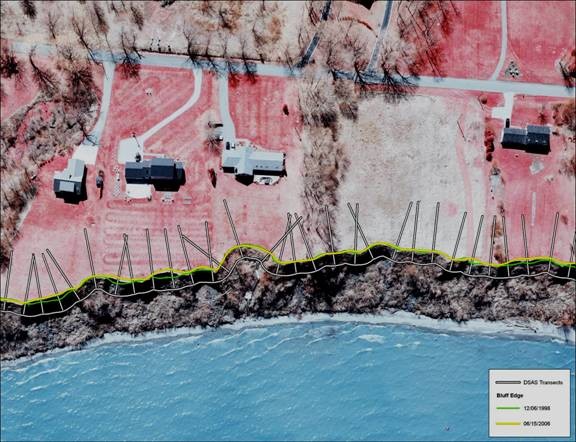Issue
Pennsylvania’s Bluff Recession and Setback Act (BRSA) states that structures located on Lake Erie bluffs must be set back from hazardous areas prone to bluff recession. The act requires periodic calculations of bluff recession rates to determine the appropriate municipal setbacks for residential, commercial, and industrial structures. In the past, estimated recession rates have been determined by onsite field measurements, a process requiring significant staff time and travel cost.
Process
The Pennsylvania Coastal Resources Management Program used a lidar application to determine recession rates of cliffs, replacing existing field-based methods. Existing lidar data sets collected from 1998 and 2006 were processed to create a bare earth data set that was used for analysis in ArcGIS. Bare earth digital elevation models and derived products were applied to delineate the regulatory bluff edge for each year, compare changes during the seven-year period, and define and update bluff recession rates.
Impact
Using lidar data has reduced monitoring costs and increased the resolution and overall accuracy of the generated bluff erosion rates.

